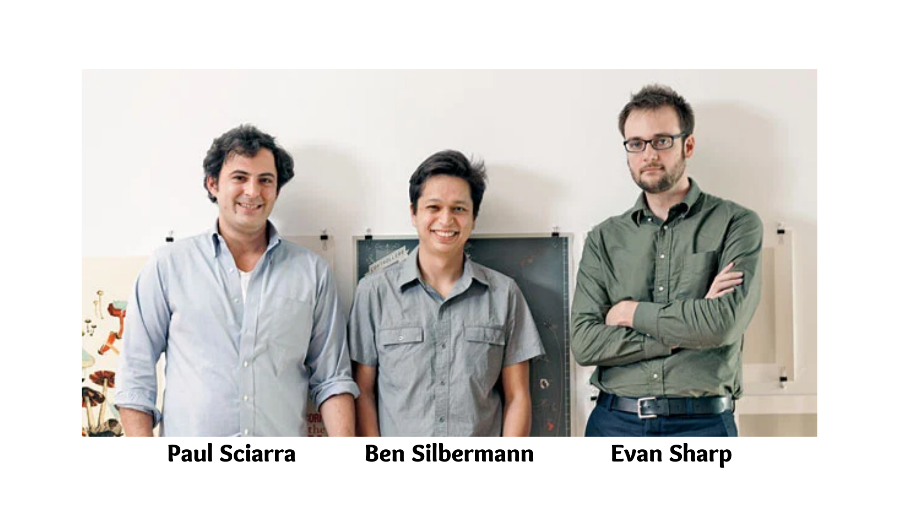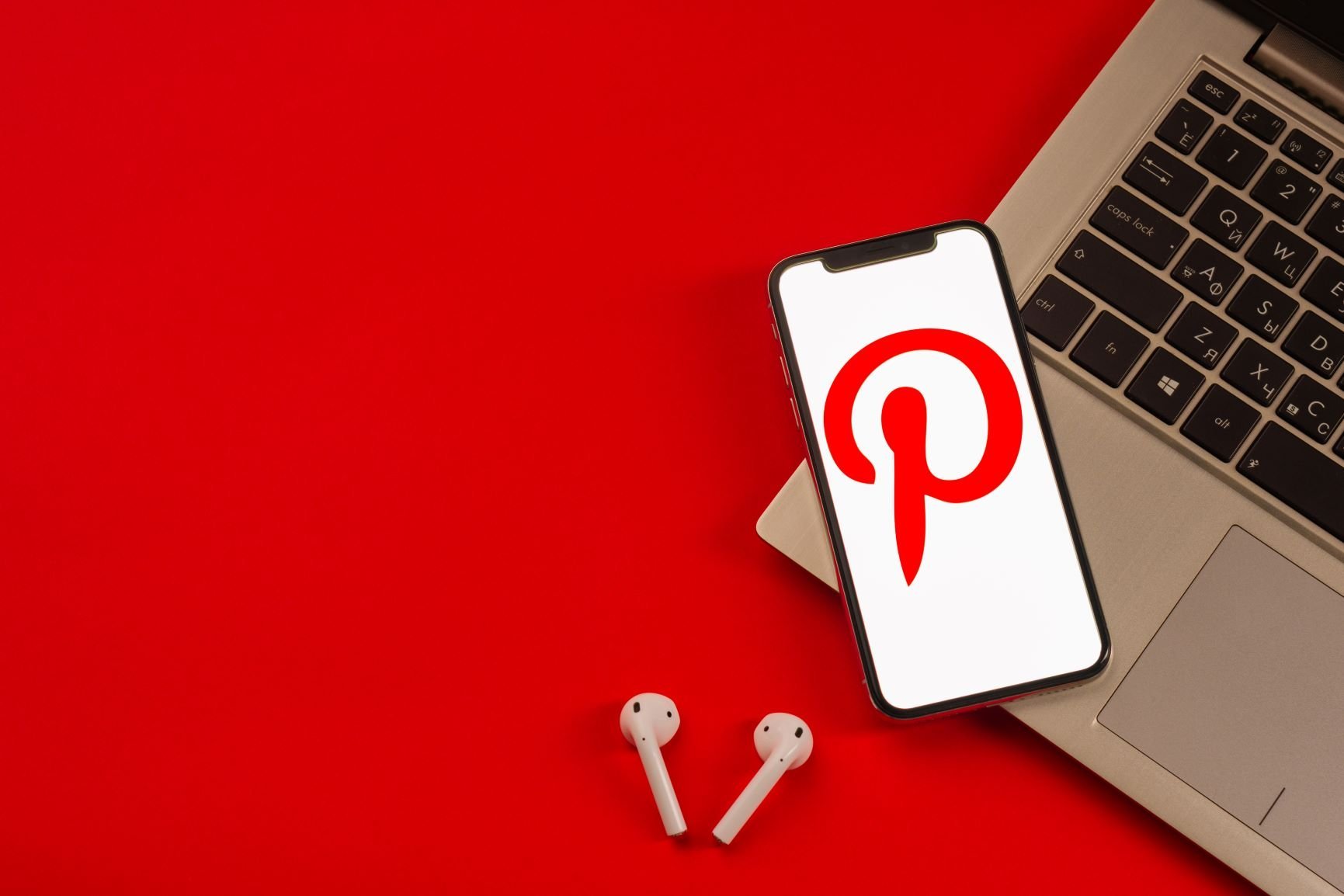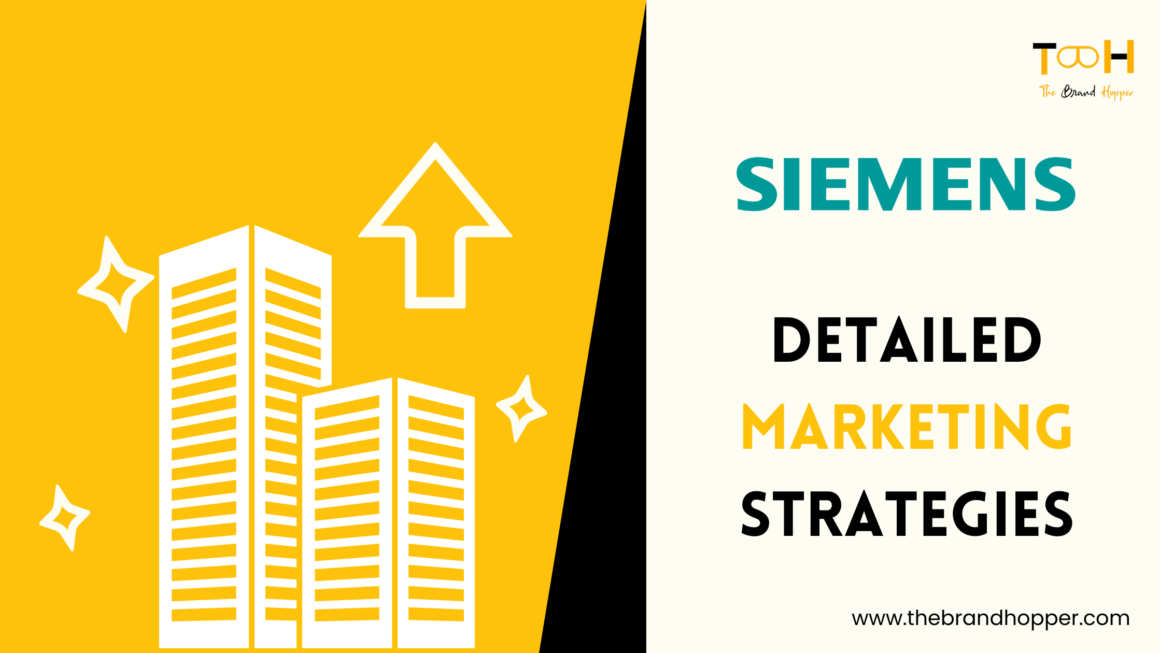Pinterest can be referred to as an online search platform, just visually. People can upload images or links as “pins”, combine several and create a “board”, and other people who like those “pins” can “pin” it. There are more than 200 billion pins on the website currently. The search platform can be driven both textually and visually.
Before the era of Snapchat and Instagram, Pinterest came 3rd in terms of U.S. users, just behind Facebook and Twitter. In the last year itself, the active user base grew 26%, a significant leap, though still far behind Facebook. The lockdown around the world further helped Pinterest boom its business at an unprecedented pace. But this journey of Pinterest from 3000 users to 73 million users has not been without its fair share of hurdles.
About the company
Pinterest was founded in 2009 by three friends Ben Silbermann, Evan Sharp, and Paul Sciarra. It is a unique social platform that allows users to either show their ideas to the world or explore and save the ideas they like. The ideas can be virtually anything, be it DIY projects or art or articles related to jobs. Each idea is represented by a “pin”, which can consist of an image, an article, an URL, or any source that gives the full description of that idea. These “pins” are categorized by “boards”, and each “board can have any number of pins. Each user has the freedom to either keep their board public for everyone to explore or keep it private for only their eyes.

The website has used machine language and A.I. to further improve their website as per the user’s needs. For example, if you save a pin of “10 top jobs for a Data Scientist”, there will be recommendations of pins like “How to grow in the field of Data Science” or “Best jobs for a beginner in the field of Data Science”.
Though initially, the website was created with a simple idea of something that would inspire creativity and be useful to people everywhere. It soon grew to the point that people began finding the answers here to basic everyday questions like, “What tattoo should I get?” or “What should I make for dinner today?”. Whatever the purpose of the users maybe, the one thing everyone agrees upon is that Pinterest has made their life enjoyable.
The CEO Story
The story of CEO Ben Silbermann is a very inspiring one. Growing up in Iowa, he always assumed that he would also become a doctor, just like his parents. While he did look up to several entrepreneurs like Steve Jobs and Walt Disney, he was never much inspired to follow in their footsteps.
A career change came when he decided to go into business, rather than medicine, in his junior year. He eventually got a job as a consultant but wasn’t ready to settle in that career line just yet. After being inspired by the movie “Pirates of Silicon Valley”, he moved west to Silicon Valley. He finally thought that he took a step in the right direction and loved living in the Valley.
The next significant change came when he got a job at Google in the customer service department. But even there, he was dissatisfied as a substantial part of his work was making spreadsheets and the like. After a period, he decided to quit instead of just complaining about what he couldn’t do.
After a phase of failures, he teamed up with an old friend Paul Sciarra and made an app called “Tote”, an online catalog. But they were getting rejected by many investors, and no one seemed to believe in them. But in a drive to show the world that quitting from Google was the right decision, and to not let Sciarra down, Silbermann continued to be determined. Finally, a breakthrough came when an investor said yes. After that, several investors agreed too, who had previously said no. This time they decided on the name “Pinterest”. After meeting Evan Sharp, the three of them became the co-founders of Pinterest.

The Initial Days
When Pinterest launched, initially, no one even got the basic idea of the website. In January 2010, Silbermann himself put up the first-ever “pin” on the website.

Gradually the users began to grow, but it was still not creating much hype. In May 2010, another breakthrough came when a woman named Victoria, who later became the company’s community manager, helped organize a program called “Pin it forward”. This was the turning point for the website, as this created a sense of connection between people. Users multiplied after that and began creating boards like tour guides or various collections.

While they were definitely on the path to success, they couldn’t afford an office at the time, so they purchased a small house. Having conferences in the backyard and dividing different regions of the house amongst the team, they continued to work upon Pinterest.
The philosophy of Silbermann was that Pinterest isn’t created to keep users online. Instead, the primary purpose is to inspire people to go offline and do things instead of just reading about them on the internet. They also want users to see beauty where it’s not noticed usually, be it a grocery shop or a bookstore.
Also Read: Snapchat – The Multimedia Messaging App And Its Culture Of Aggressive Innovation
The Timeline
December 2009 – Development of Pinterest began
March 2010 – Launch of the prototype
December 2010 – 10,000 users reached
March 2011 – Launch of an iPhone app
August 2011 – Time magazine listed the company in its “50 Best Websites of 2011” article
December 2011 – Became one of the top 10 largest social network services (Hitwise)
January 2012 – 11.7 million unique U.S. visitors reached
May 2012 – Best Social Media App and People’s Voice Award for best functioning visual design at Webby Awards
March 2012 – Terms of service were updated to eliminate the policy that gave it the right to sell its users’ content
August 2012 – Policy was altered so that a request or an invitation was no longer required to join the site
October 2012 – Launch of business accounts
October 2013 – Display of advertisements in the form of “Promoted Pins”
March 2017 – Acquisition of Jelly Industries, a small search-engine company
February 2019 – The Wall Street Journal stated that the company secretly filed for an initial public offering (IPO) of stock
April 2019 – Went public on $19 per share
Growth strategies
Pinterest is a unique company with an equally unique story. It has an amazing growth in just ten years. The growth from 3000 users to almost 73 million users, they’ve used various strategies.
Word-of-mouth
Initially, the users of Pinterest were majorly in Des Moines, Ben’s homeplace. But after being stuck at a ceiling of 3000 users, they knew they have to give a push to increase the user base.
Pinterest mainly marketed themselves by organizing meetups at local boutiques, attracting people involved in handicraft. This causes a chain reaction in which if a single member had been in attendance, they spread the news of Pinterest to their whole community, and so on.
Pinterest used by brands for marketing
As the popularity of Pinterest grew, several brands turned to this platform for organizing marketing campaigns. Brands like Honda and Wholefoods have successfully carried out campaigns on Pinterest. But for Pinterest, the end result of such campaigns doesn’t matter much. Either way, users learn more about Pinterest and spend more time on the website. But so far, brands have benefitted very nicely from collaboration with Pinterest, as have the company itself.
The “Boards” feature
As users started making boards by collecting various pins or creating different pins, thus emerges a sense of pride in the users. Pinterest makes everyone feel like a creator or a curator. And when someone else saves a pin from a user’s board, they get a notification that “You’ve got good taste”. Users feel that various people from various regions appreciate them and associate that sense of pride with Pinterest.


Setting up your business on Pinterest
1) Setting up a Pinterest business account
- Match the tone and aesthetic of the profile with your idea
- An appropriate and attractive board cover
- SEO-friendly title for the board
- A concise yet accurate board description (can include hashtags)
2) Optimizing website images
- Install Pinterest’s “save button” to make your pins more accessible to the audience
- Apply for and use “Rich pins” to boost engagement
3) Staying Active
- Plan a schedule for uploading and stick to it (5 pins a day can be a suitable goal)
- Keep a period between uploading to engage your audience throughout the day
- Continually analyze and improve your content
4) Tips and tricks to enhance your profile
- Categorize your boards accurately
- Create a logo or an icon for your brand, and use this in every pin to create a presence
- Plan ahead for themes or seasonal content
- Connect and collaborate with several pinners to improve networking
- Connect with your different platforms’ accounts (Instagram, Etsy)
- Research and choose appropriate ads according to your target audience
5) Creating attractive content
- Vertical imagery – 2:3 ratio as it is suitable for mobile use
- Enticing description
- Aesthetics – Design suitably so the logo and the base design doesn’t clash
- Storytelling – Be it articles or simply images, keep it creative, so the users are hooked in to know the story




Amazing and brilliantly written 🙂